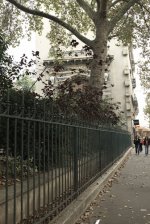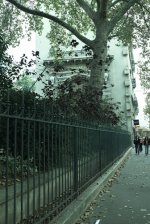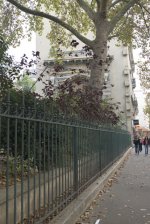Ben Z
Veteran
I've been using Capture 1 LE that came with my M8 as my raw developer, and was generally happy, but I had been doing a handful of shots at a time. However when I returned from a trip with a couple hundred to do, I quickly became unhappy. None of the M8 color profiles (or any others for that matter) were effective to where I didn't need to white-balance almost every shot (DNG, shot on AUTO-WB), which was tedious to say the least.
So, despite what I've read that C1 is the best developer for M8 files (of course it has to be, it came in the box from Leica 🙄 ) I tried CS2's camera raw that I use for all other digitals. Unlike the C1-LE (unless I can't find the setting 😕 ), ACR has WB selections including "AS SHOT" (my usual default with all my other digitals) and "AUTO". I found that a blanket application of "AUTO" did the trick for most files, at least to the point where I can easily tweak the more difficult ones in CS2 if I need to. I have "Exposure" set to "Auto", all sharpening and noise reduction turned off, and contrast set to "linear", which gives me the most unadulterated TIFF's. (Though I may twiddle with the ACR sharpening with M8 files to see if it looks better than doing it in Focalblade afterwards as I have been).
Perhaps had I set the WB manually (was informed that wasn't really necessary when shooting DNG's but that's not what I found), and perhaps if and when Leica gets the auto WB in better tune, then I will revisit C1-LE. Meantime it's comfortable for me to have basically the same workflow regardless of what camera I'm shooting, aside from differences in settings of course.
So the point of info here for others is, if you are shooting DNG, you may not have to set a manual WB on the M8 each time the light changes if you use ACR's auto WB.
So, despite what I've read that C1 is the best developer for M8 files (of course it has to be, it came in the box from Leica 🙄 ) I tried CS2's camera raw that I use for all other digitals. Unlike the C1-LE (unless I can't find the setting 😕 ), ACR has WB selections including "AS SHOT" (my usual default with all my other digitals) and "AUTO". I found that a blanket application of "AUTO" did the trick for most files, at least to the point where I can easily tweak the more difficult ones in CS2 if I need to. I have "Exposure" set to "Auto", all sharpening and noise reduction turned off, and contrast set to "linear", which gives me the most unadulterated TIFF's. (Though I may twiddle with the ACR sharpening with M8 files to see if it looks better than doing it in Focalblade afterwards as I have been).
Perhaps had I set the WB manually (was informed that wasn't really necessary when shooting DNG's but that's not what I found), and perhaps if and when Leica gets the auto WB in better tune, then I will revisit C1-LE. Meantime it's comfortable for me to have basically the same workflow regardless of what camera I'm shooting, aside from differences in settings of course.
So the point of info here for others is, if you are shooting DNG, you may not have to set a manual WB on the M8 each time the light changes if you use ACR's auto WB.
Last edited:




